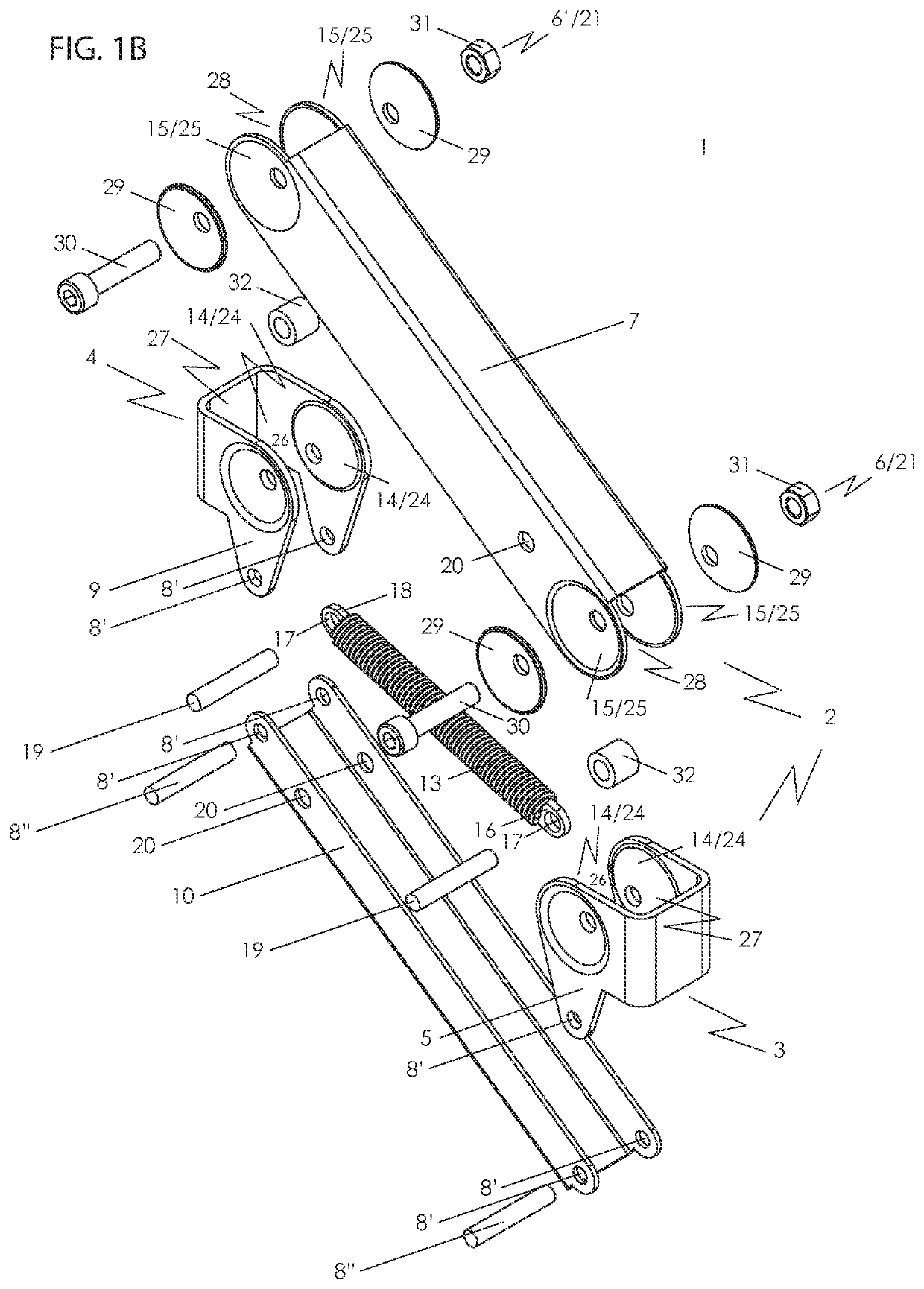Balancing arm with friction hinge
a technology of friction hinges and balancing arms, which is applied in the direction of construction, stands/trestles, building aids, etc., can solve the problems of wear and play, assembly, and collapse of the loaded friction hinge, and achieve the effects of less complex, less expensive, and less difficult to assembl
- Summary
- Abstract
- Description
- Claims
- Application Information
AI Technical Summary
Benefits of technology
Problems solved by technology
Method used
Image
Examples
Embodiment Construction
[0031]FIGS. 1a-1c show a first embodiment of a balancing arm 1 in accordance with the invention. The balancing arm 1 comprises a folding arm 2 that extends between a first end 3 that is held in position, and a second end 4 on which a load is carried. Typically, the first end 3 may be held on a clamp on a desk, and the second end 4 may carry a VESA mount of a computer display monitor, so that the monitor may be adjusted in height relative to a desk.
[0032]A first folding arm portion 5 of the folding arm 2 extends from the first end 3 of the folding arm 2 and is pivotably connected via a friction hinge 6 to a second folding arm portion 7 of the folding arm 2. The second folding arm portion 7 extends to the second end 4 of the folding arm 2. The friction hinge 6 in the folding arm 2 allows angular adjustment of the first folding arm portion 5 of the folding arm 2 relative to the second folding arm portion 7 of the folding arm 2, and thus positional adjustment of the second end 4 of the ...
PUM
 Login to View More
Login to View More Abstract
Description
Claims
Application Information
 Login to View More
Login to View More - R&D
- Intellectual Property
- Life Sciences
- Materials
- Tech Scout
- Unparalleled Data Quality
- Higher Quality Content
- 60% Fewer Hallucinations
Browse by: Latest US Patents, China's latest patents, Technical Efficacy Thesaurus, Application Domain, Technology Topic, Popular Technical Reports.
© 2025 PatSnap. All rights reserved.Legal|Privacy policy|Modern Slavery Act Transparency Statement|Sitemap|About US| Contact US: help@patsnap.com



